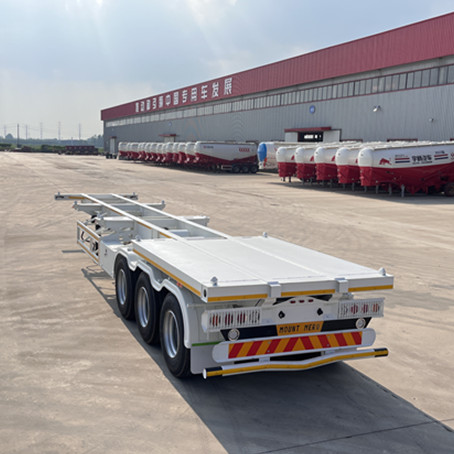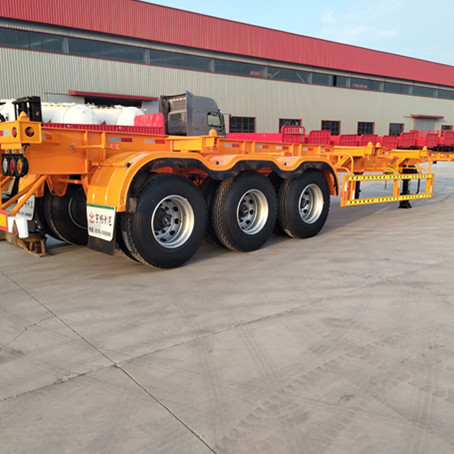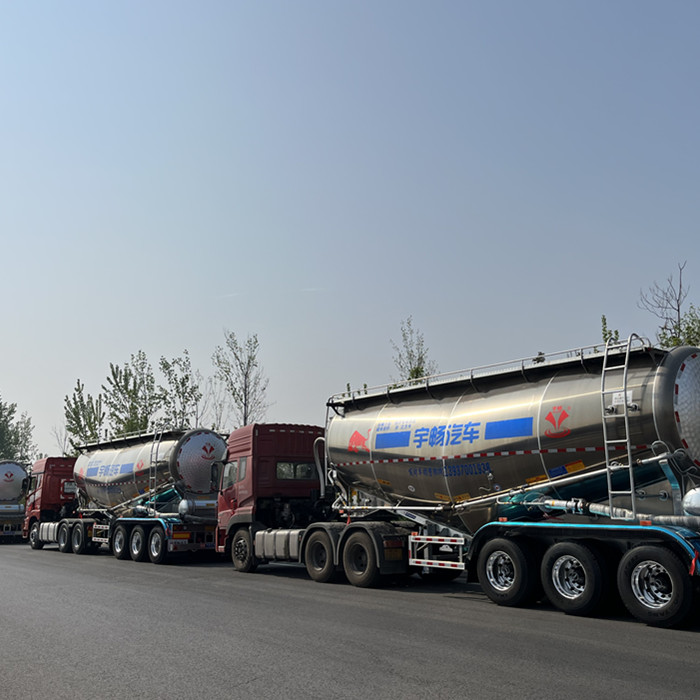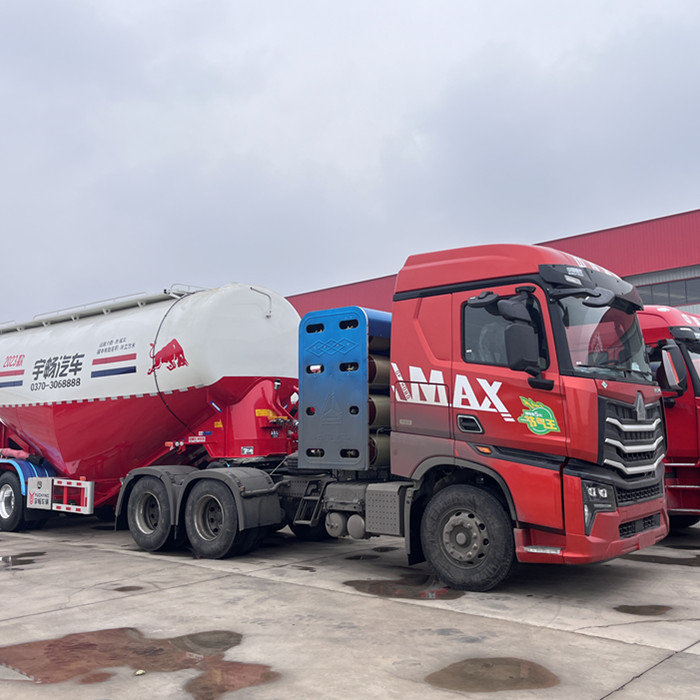Container chassis foundation
What is a container chassis?
Generally speaking, the container chassis is also a multimodal chassis trailer. It is a wheeled structure consisting of a steel frame, axles, tires, braking system and suspension system that can withstand heavy loads and is mainly used to transport containers between ports, warehouses and terminals.

In addition, as the design evolves, many accessories can be found on the container chassis for easy operation, such as air suspension, ABS, parking sensors, GPS systems, etc. You can consult your manager for a spec sheet.
Shipping done primarily through the use of containers can be complex, especially if containers of different sizes are used.
You will find that some of these containers require special tractors and trailers due to their length and width dimensions.
Container chassis trailers offer solutions to load containers of different types and sizes.
Other factors leading to the manufacture of container chassis include government laws and regulations in the transportation industry.
These regulations define the distance from the front wheels to the rear wheels of all heavy vehicles and must be followed in any design and manufacture.
The most important thing to note about container chassis trailers is that they come in different types, including both strong and lightweight options.
This is because those are used for heavyweight applications and others for lightweight operations.
one. Basic technical conditions of container chassis trailer
Container chassis trailers come in different shapes and sizes. You'll find major components and systems inside each trailer that will help you decide which trailer to buy or lease.
It depends on your needs and the regulations set by the authorities in that jurisdiction. The following are the basic defining characteristics and specifications of a container chassis trailer:
Size: Container chassis trailers come in different sizes and can carry 20ft or 40ft containers. There are also some suitable for carrying 45ft containers, which may be ideal for you to load more if your local government laws allow it.
Load Capacity: The load capacity of our trailers ranges from 20 tons – 40 tons. For heavyweight applications, you may want to consider the 40 ton option. However, the 20 ton option is likely to be sufficient for most containers you will be shipping. This is a very important aspect to consider when you choose a container chassis trailer.
Axles: Depending on the axle configuration, you will typically get a 30 tonne capacity axle using 2 axles. For this option, the maximum weight for a 40ft container is 25 tonnes. We can also customize the three-axis container chassis according to different needs. All these options will be available to you according to your needs.
Tires: Always check the laws and regulations regarding the tire configurations allowed in your country. Some countries only allow single tire options, which means that if you choose this option, you will need to have a reasonable allocation of tires for the trailer.
Design: Due to its application and use, container chassis trailers are constructed of high strength materials such as Grade50 [345] and Grade80 [550] steel. It is a solid construction designed to give you what you want without much The manufacture is done with tried and tested quality welding techniques to ensure the trailer is built to a high quality standard.

two. Different models of container chassis trailers
Container chassis trailers come in different designs depending on their application and usage. Each of them is picked up from the desired transport and where it will be used.
This gives you guidance on which type of container chassis trailer you should buy. One option may require containers to be stacked together, while others require transporting them one after the other along the road.
These containers are also transported by rail, which means that the material and design of the trailer should somehow match the other platforms used for container transport.
The construction of container trailers is also guided by local authority transport regulations. In some countries, a maximum container height is usually given, whether it is stacked or in transit at a given time.

 WhatsApp
WhatsApp
 sales@youcantrailer.com
sales@youcantrailer.com
 +8615203709888
+8615203709888


